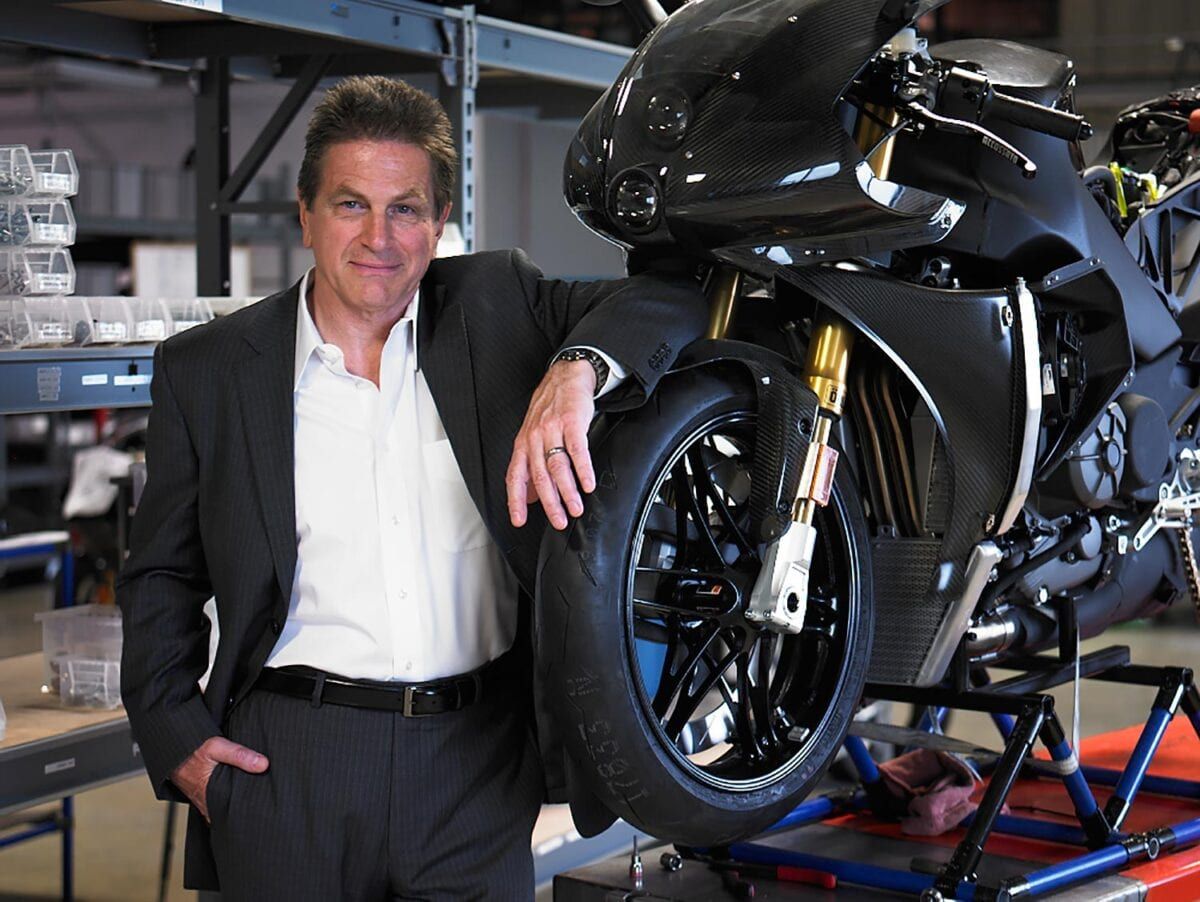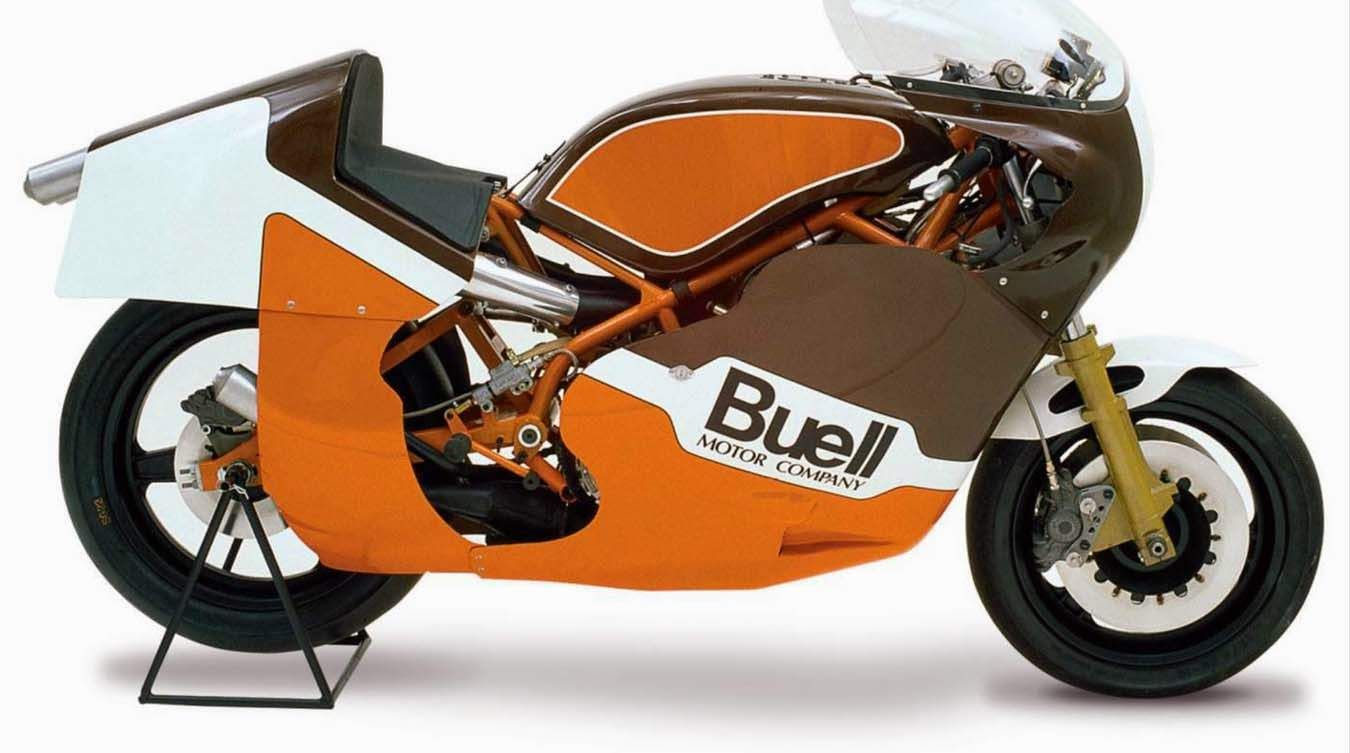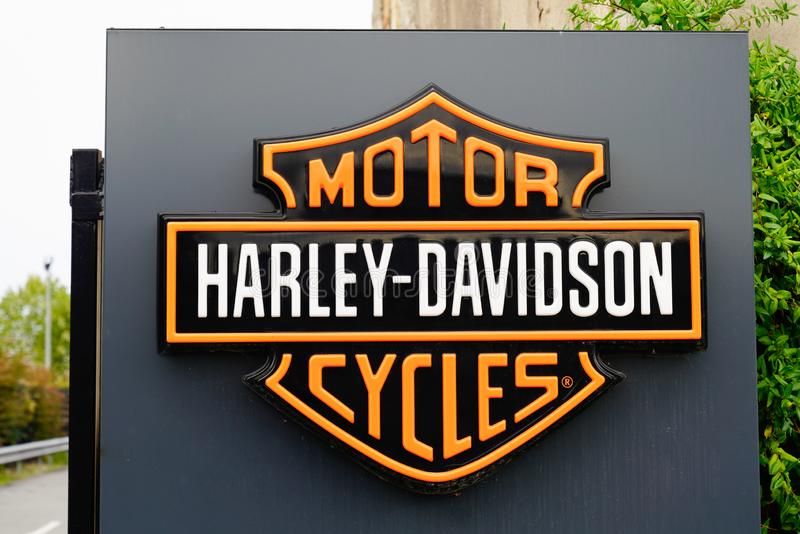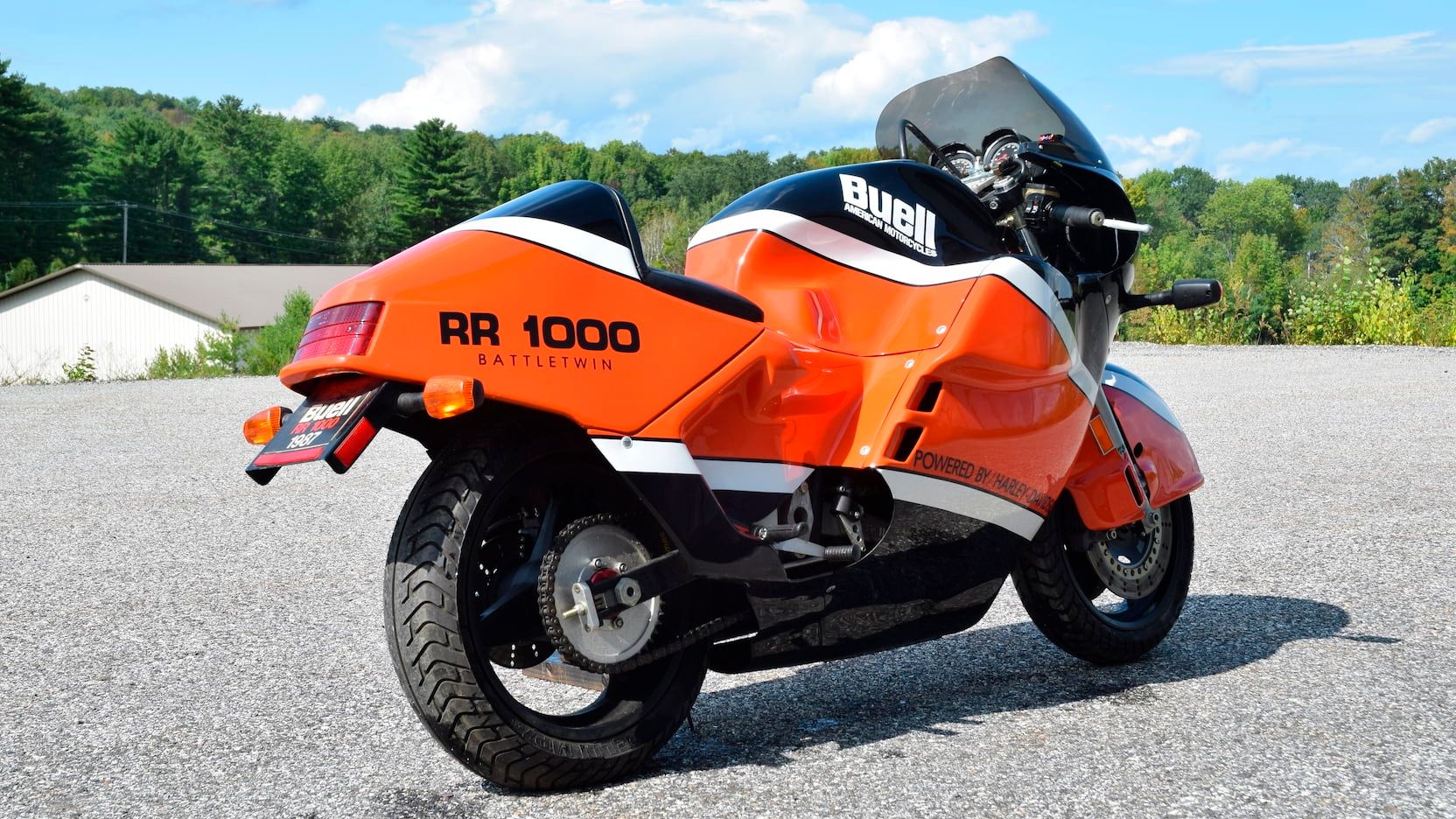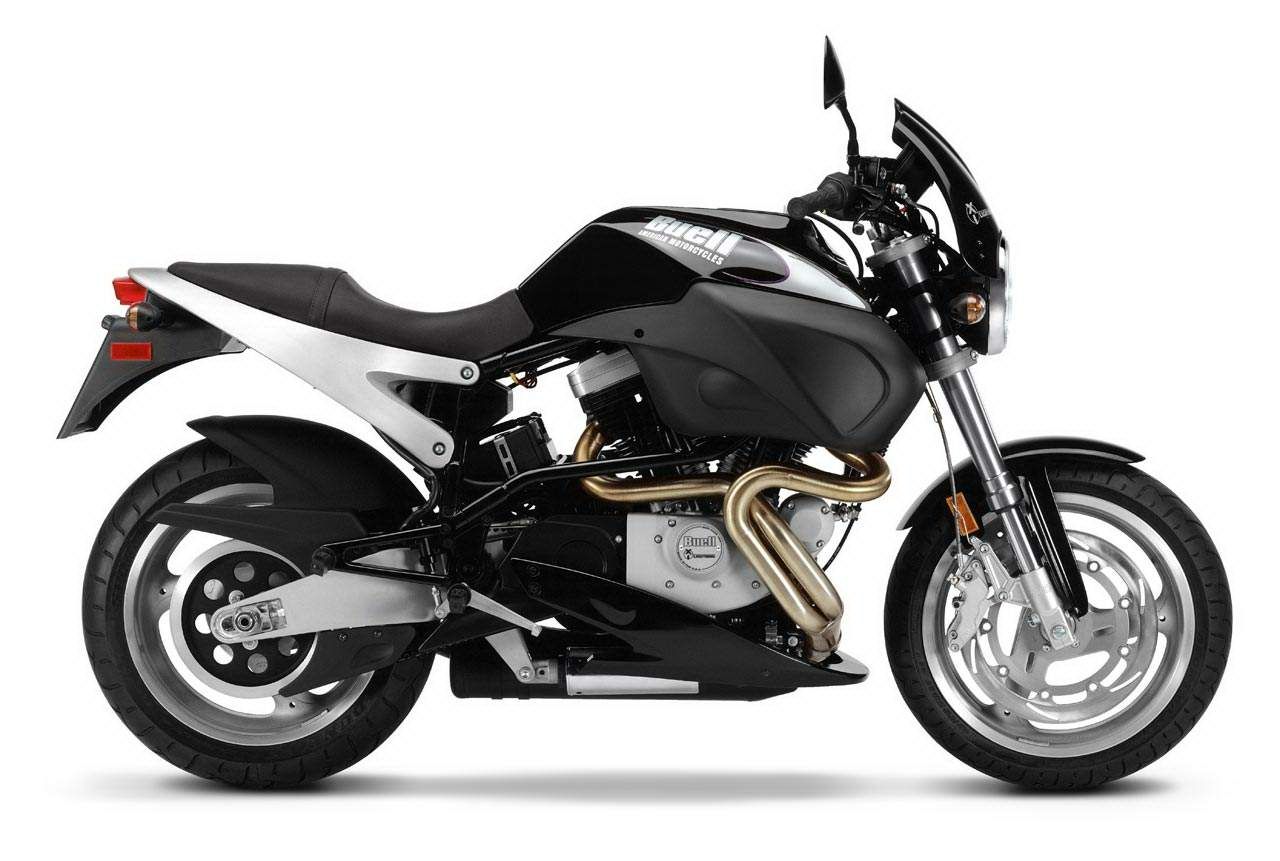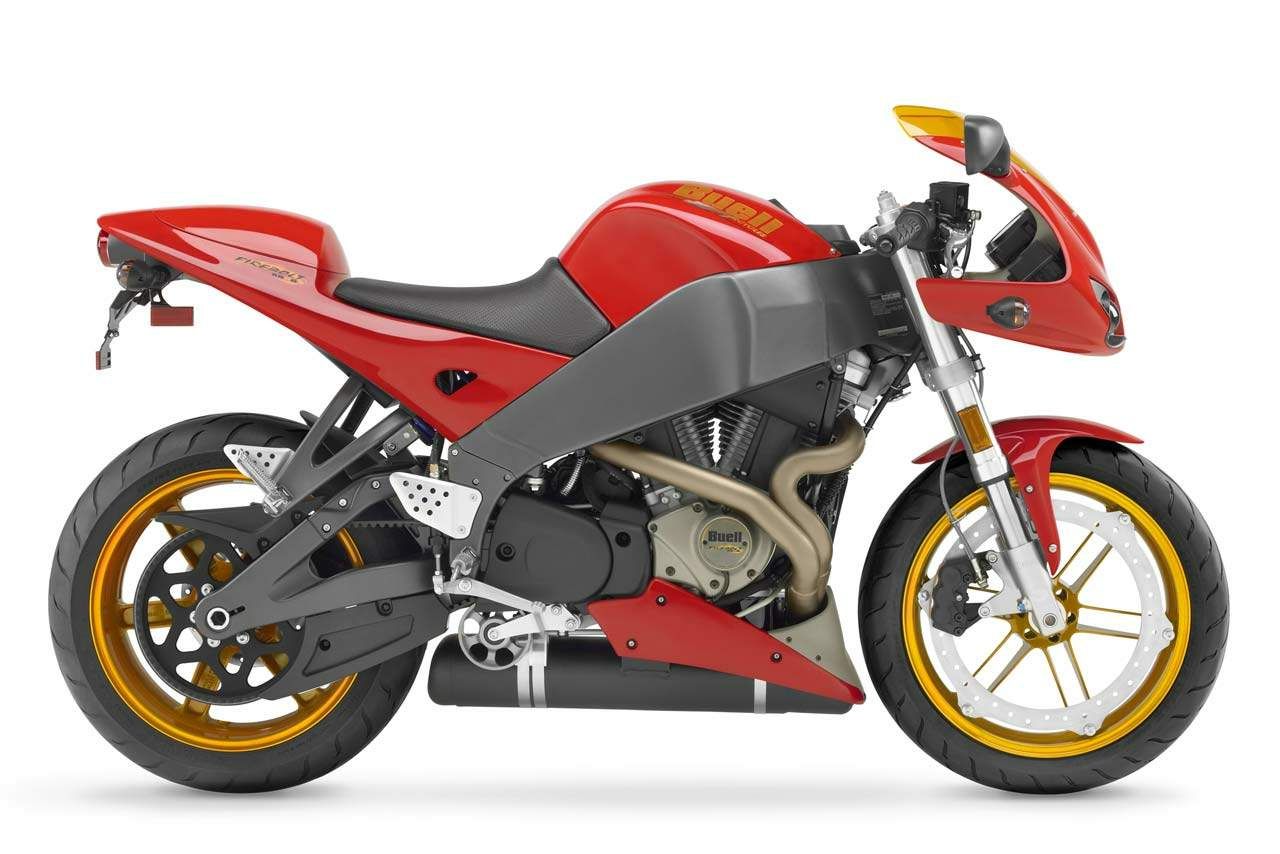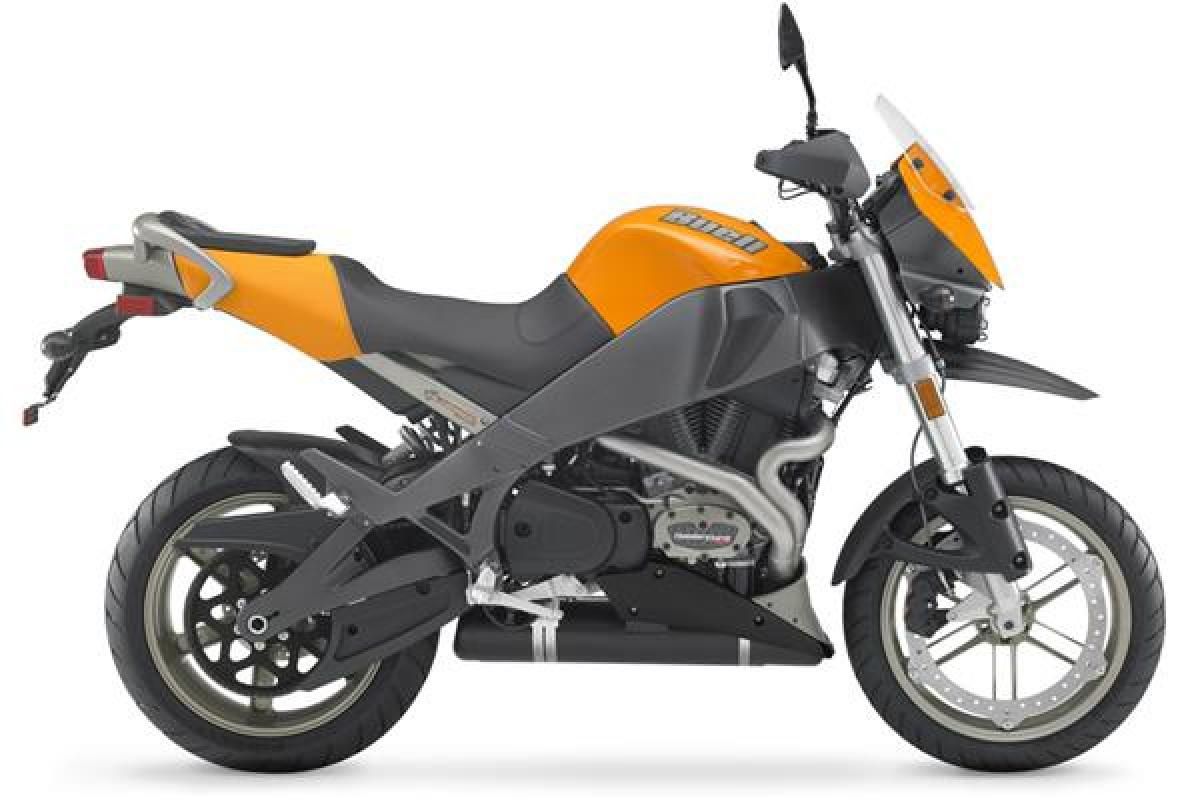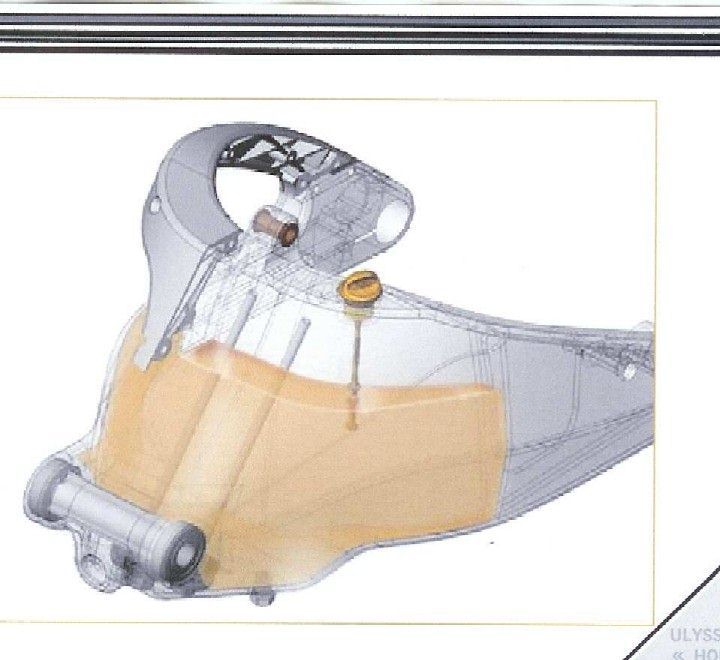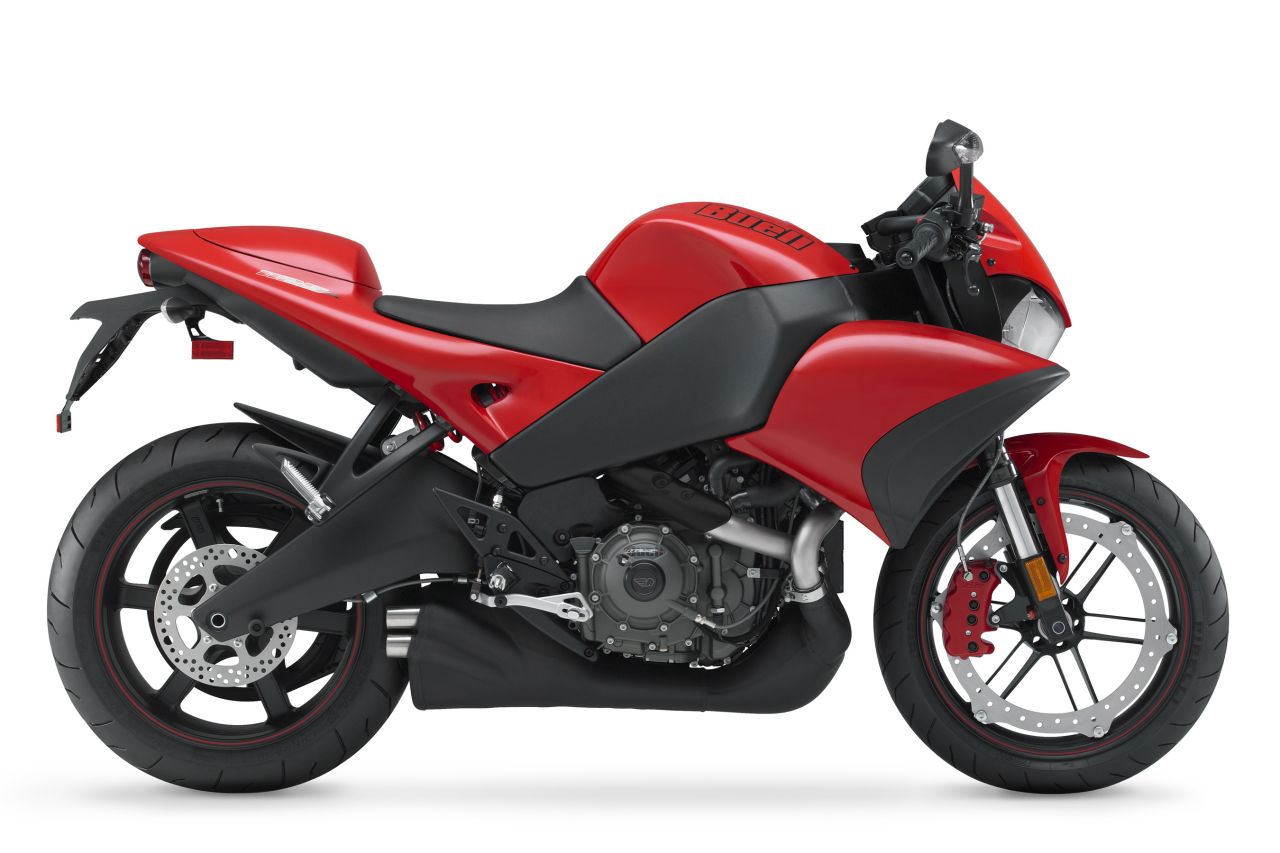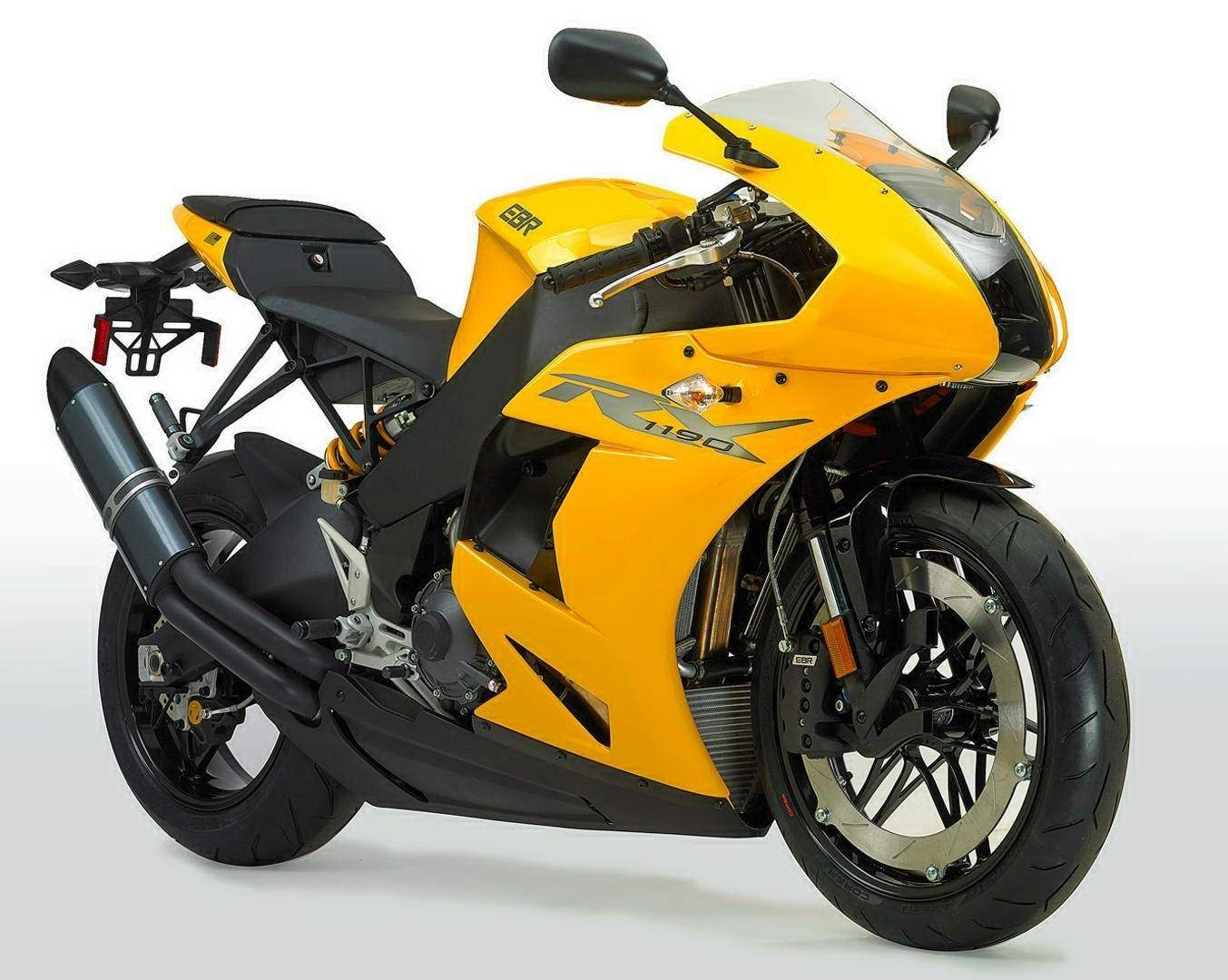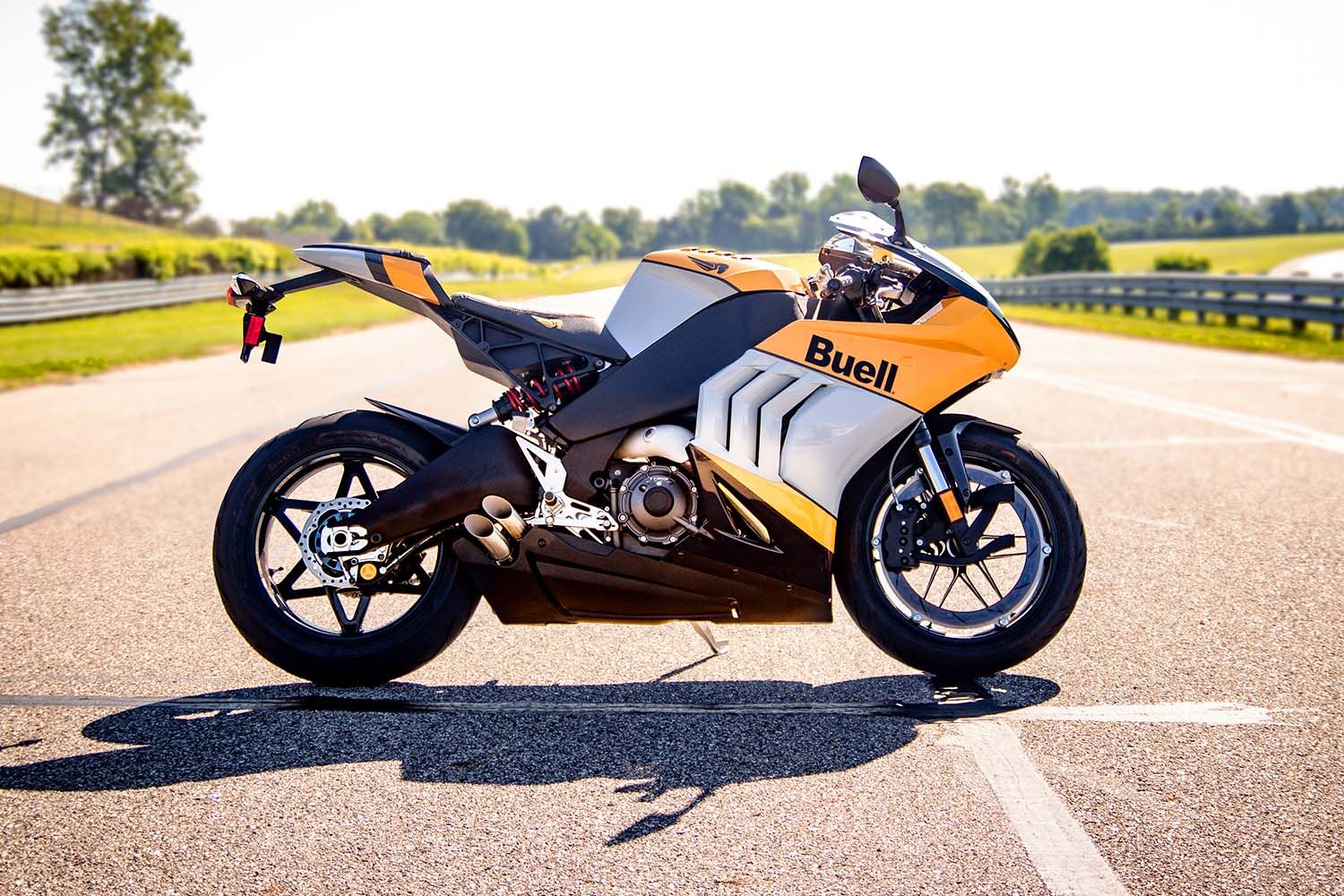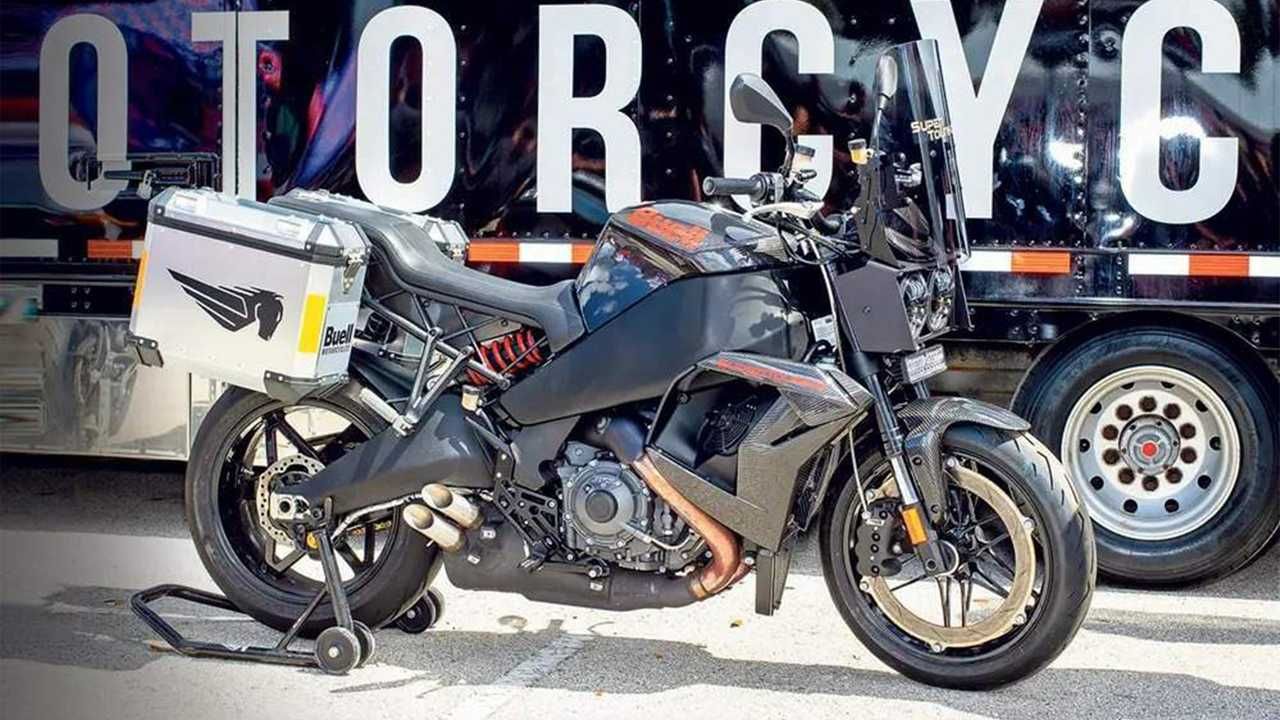Erik Buell is known as a maverick engineer who first applied his thinking to Harley Davidson before branching out on his own with his own brand of motorcycles, mainly using Harley Davidson Sportster engines and, latterly, Rotes V-twins. All Buells have been distinguished by some lateral engineering thinking
The Man Himself
Erik Buell taught himself motorcycle maintenance as a teenager and studied engineering at night school as the University of Pittsburgh while working as a motorcycle mechanic by day.
When he graduated in 1979, he took a job with Harley Davidson, working on suspension and chassis development. While there, he bought the tooling and remaining parts from a defunct British motorcycle called the Barton, which was intended to be a 750cc race bike.
His first machine was the result of combining two separate motorcycles, including the square four engine from Barton, to make the RW750, with which he competed in the AMA Formula One category.
In 1983, he left Harley Davidson to set up the Buell Motorcycle Company. At the same time, the Formula One category was cancelled but Buell merely shifted his attention from out-and-out racing bikes to street bikes.
Maintaining Ties With Harley Davidson
Buell maintained strong ties with Harley Davidson and the first production Buell street bikes used Harley engines in a chassis of Buell’s own design.
In 1993, Harley Davidson bought a 49-percent stake in Buell Motorcycles and, in 1998, H-D bought a controlling interest in Buell, meaning that Buell motorcycles became a subsidiary of Harley.
Harley Davidson’s management insisted that Buell follow H-D’s product planning and distribution process, feeling that Buell was a brand that would tempt people into trading up to a Harley Davidson.
By 2009, however, the marriage was over, when Harley Davidson announced the end of production of Buell motorcycles in order to concentrate on their own products. Harley chose not to sell Buell as they didn’t want their own dealerships, through which Buells were available, to sell an outside brand in competition with their own products.
The First Buells
The first Buell was called the RR1000, using surplus engines from the Harley XR1000 production, which were about to be superseded by a new Sportster engine. Already, the innovative engineering was in evidence, such as the rear coil-over shock being mounted horizontally underneath the engine.
Buell manufactured 50 RR1000 Battle Twins in 1997-1998, using up the surplus XR1000 engines. When they ran out, Buell turned to the XL1200 Sportster engine, putting it first in the Competition RR1200, then later the Street and Competition RS1200 models which sold well, despite the $16,000 price tag.
The First Road Bikes - 1994-2002
Moving away from race bike production, Erik Buell turned his attention to road bikes which, although interesting, lacked all the innovations that would later come to define a Buell motorcycle.
Models such as the S1 Lightning, X1 Lightning, S2 and S3 Thunderbolts and M2 Cyclone were marketed alongside each other in the late 1990s/early 2000s.
They were all variations on the same theme, the ‘X’ models replacing the ’S’ models in the catalogs. All were powered by 1200+cc Harley Sportster engines which had been further developed by Buell to produce more power and torque - up to 100 horsepower in many cases. There were both sports and touring models.
The XB Series - 2003 - 2010
In 2003, a completely revised and updated range of bikes was launched, known as the XB series. Up to that point, the chassis frames had been made out of steel tubing but, for the XB models, a twin-spar aluminium frame was utilised, along with all the signature mechanical innovations that characterise Buells to many enthusiasts.
Two engine sizes were used - 900cc and 1200cc - in three different models: the naked Lightning, the Firebolt with a small nose fairing and the adventure-style Ulysses.
These models continued up to the demise of the original Buell Motorcycle company in 2009, with some models still selling in 2010 as stocks were used up.
Technical Innovation
Right from the outset, Buell’s aims for his motorcycles were mass centralisation, low unsprung weight and frame rigidity.
Mass centralisation was achieved by mounting the rear shock absorber horizontally underneath the engine and, later, the exhaust mufflers for the XB models. Unsprung weight was kept down by the use of the single, rim-mounted disc brake on the front wheel, which also meant the front wheel could be much lighter as it didn’t have to absorb the same braking forces as a hub-mounted disc.
The XB-series aluminium spar frame was hugely stiff and also doubled as the fuel tank, while the swing-arm carried the engine oil. Erik Buell was a passionate believer in parts doing more than one job: it simplified both the motorcycle and the supply chain, not to mention reducing the amount of spares a dealer had to keep in stock.
The Buell 1125R and 1125CR
Looking to the future in 2007 (before Harley pulled the plug in 2009), Buell announced the 1125R, a sports bike that used a v-twin engine built by Rotax with significant input from Erik Buell. Called the Helicon, the 72-degree, 1125cc engine had twin overhead cams, four valves per cylinder and produced a healthy 146 horsepower and 83 pound-feet of torque.
The 1125R didn’t have a full fairing as Buell didn’t want it to be seen as belonging to the same class as Japanese superbikes. Customer feedback lead to the introduction of the 1125CR, which had a mode cafe racer style, with naked styling and a longer wheelbase.
Erik Buell Racing
After Harley Davidson had pulled the plug on Buell Motorcycles, Erik Buell formed Erik Buell Racing, producing a race version of the 1125R and supporting racers who bought them. He also developed the 1190RS, 1190RX and 1190SX, which used the same engine as in the 1125, but enlarged to 1190cc, which boosted power up to 185 horsepower.
Then, in 2013, Hero MotoCorp, the Indian motorcycle manufacturing combine, bought a 49.2-percent stake in Erik Buell Racing for $25million.
In 2019, Buell formed a new electric vehicle company called Fuell, with two models, the Flluid and the Fllow.
Into the Future
In October 2021, it was announced that production of Buell motorcycles was to resume under the Buell Motorcycle Co. company name, albeit with no involvement from Erik Buell.
The first new model to be released is the Hammerhead 1190, which uses the Rotax engine as developed by Erik Buell in a chassis that is the same as the old 1125 models.
Buell also later showed an adventure bike, the Super Touring, and a dirt bike the Baja DR, or Dune Racer. Both are slated for production in 2023.
FAQ
Q: Are Buell motorcycles any good?
Some people love them and others hate them but, in general, Buells are very good motorcycles, with proven mechanicals and extremely strong chassis. They were always quirky, with interesting engineering solutions but they worked well.
Q: Why did Harley shut down Buell?
Harley shut down Buell due to the global financial crisis in 2008/2009. Harley figured it could better spend the money it was spending with Buell on developing its own products.
Q: Why did Buell fail?
Buell didn’t really fail: it’s just that parent company Harley Davidson needed the money to support its own brand.
Q: How much is a new Buell Motorcycle?
The Hammerhead 1190 starts at $18,895, while the Super Touring should be around $22,000 and the Baja DR should be around $20,000 when they both go into production ready for 2023.

